Autism Treatment Evaluation Checklist (ATEC)
Unlock the power of the ATEC Autism Treatment Evaluation Checklist for personalized progress tracking and treatment planning.
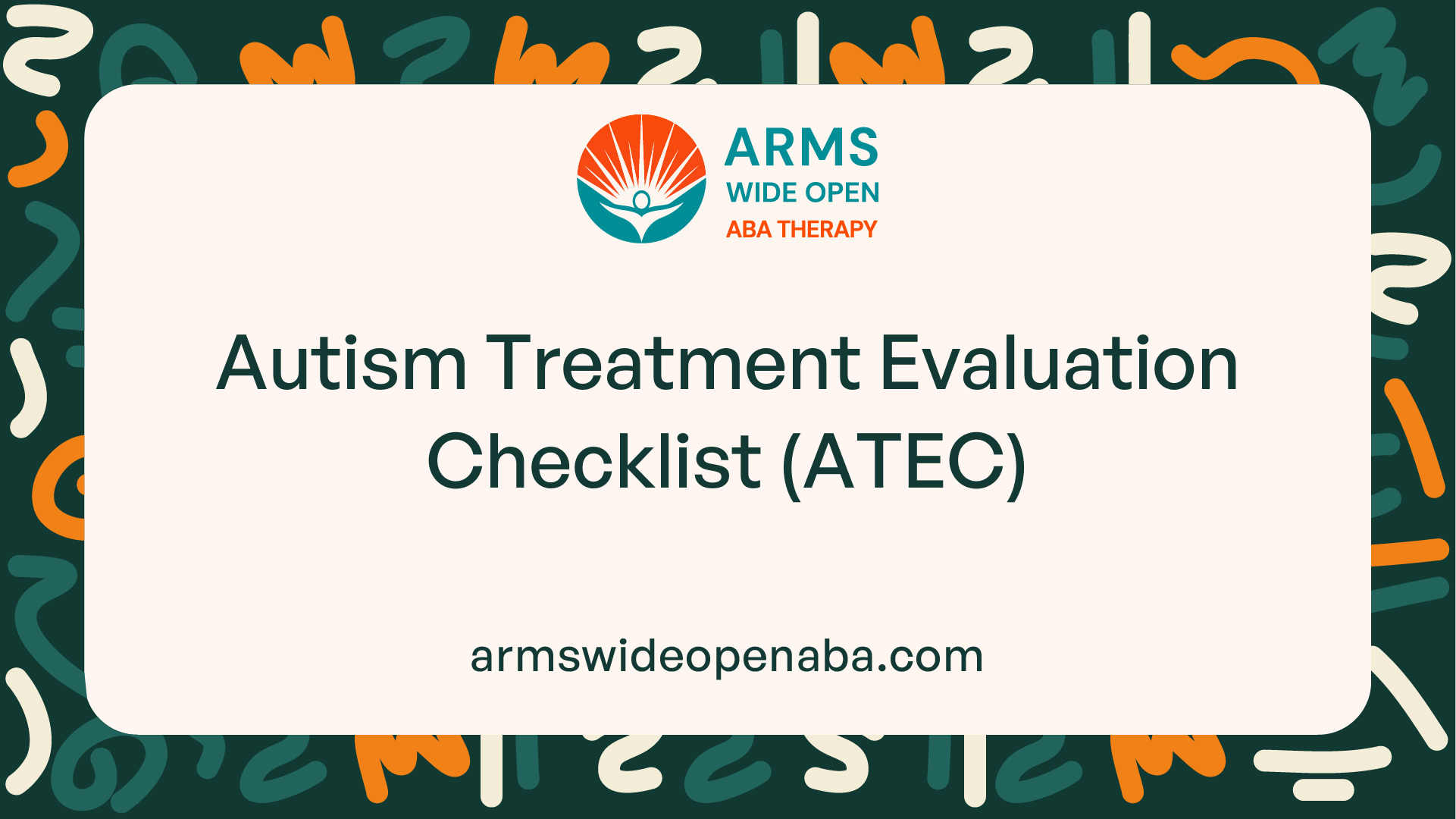
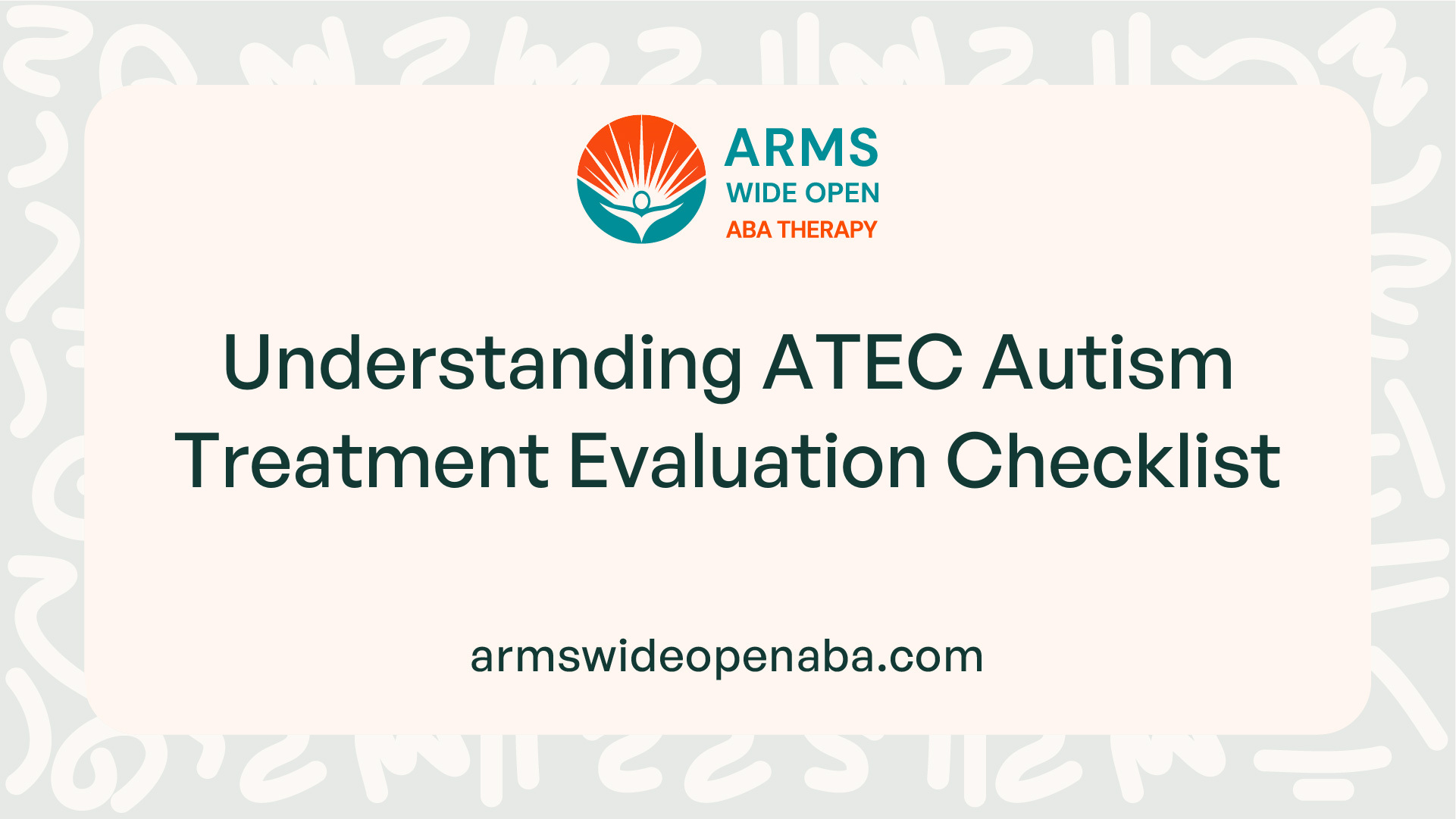
Understanding ATEC Autism Treatment Evaluation Checklist
When it comes to assessing and monitoring the progress of individuals with autism, the ATEC Checklist plays a vital role. This section aims to provide a clear understanding of what the ATEC Checklist is and its purpose in evaluating autism treatment.
What is the ATEC Checklist?
The ATEC, which stands for Autism Treatment Evaluation Checklist, is a structured assessment tool designed to measure the severity of autism symptoms and track changes over time. Developed by the Autism Research Institute, the ATEC Checklist is widely used by healthcare professionals, educators, and caregivers to evaluate various aspects of an individual's behavior and development related to autism.
The checklist consists of four subcategories, each focusing on different areas of functioning commonly affected by autism. These categories include communication, sociability, sensory/cognitive awareness, and health/physical behavior. By systematically evaluating these domains, the ATEC Checklist provides valuable insights into an individual's strengths, challenges, and progress in relation to autism spectrum disorder.
Purpose of the ATEC Checklist
The primary purpose of the ATEC Checklist is to assist in the comprehensive evaluation of individuals with autism spectrum disorder. By assessing key areas of communication, sociability, sensory processing, and physical health/behavior, the ATEC Checklist helps professionals and caregivers gain a holistic understanding of the individual's unique profile and needs.
Moreover, the ATEC Checklist serves as a valuable tool for tracking changes in symptoms and behaviors over time. By administering the checklist at regular intervals, stakeholders can monitor progress, adjust treatment interventions, and make informed decisions to support the individual's development and well-being.
Utilizing the ATEC Checklist enables a systematic approach to evaluating autism symptoms and facilitates individualized treatment planning based on the specific needs and challenges identified through the assessment process. Additionally, the checklist can contribute to research endeavors by providing standardized data collection and outcome measurement in the field of autism treatment and intervention.
For further insights and guidance on using the ATEC Checklist effectively, refer to the subsequent sections that delve into the components, administration, benefits, considerations, and available resources related to this essential evaluation tool.
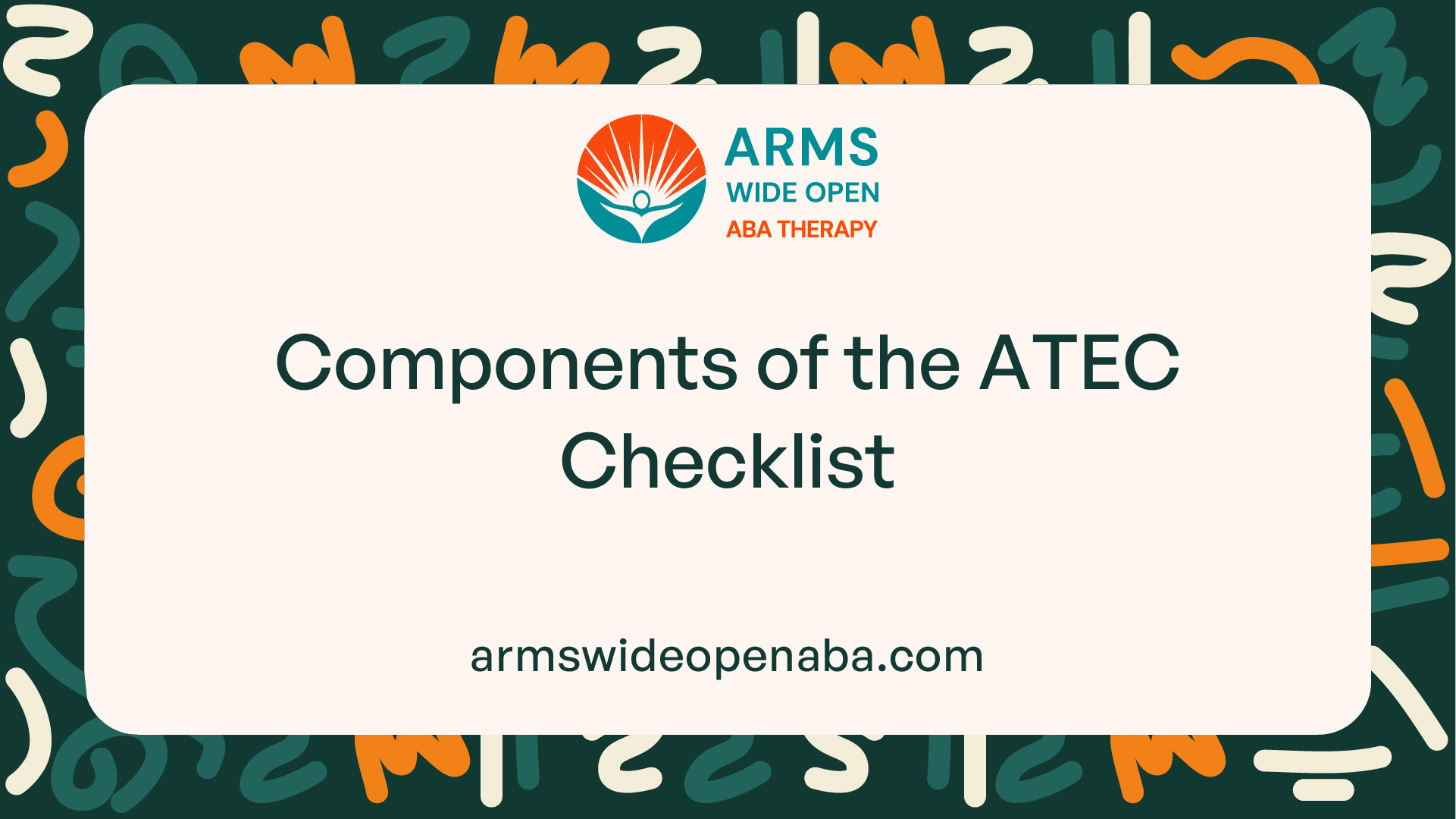
Components of the ATEC Checklist
Within the ATEC (Autism Treatment Evaluation Checklist), several key components are evaluated to assess various aspects of an individual's behavior related to autism spectrum disorder. These components help in understanding the communication, sociability, sensory/cognitive awareness, and health/physical behavior of individuals undergoing evaluation.
Communication
The communication component of the ATEC Checklist focuses on evaluating an individual's language abilities, verbal and non-verbal communication skills, and social interactions. By assessing communication patterns and challenges, caregivers and professionals can gain insights into the individual's ability to express themselves and interact with others.
Sociability
Sociability within the ATEC Checklist encompasses evaluating social behaviors, relationships with peers and adults, and engagement in group activities. Understanding an individual's sociability helps in identifying strengths and challenges in social interactions, social cues recognition, and forming relationships with others.
Sensory/Cognitive Awareness
The sensory/cognitive awareness component of the ATEC Checklist involves assessing sensory sensitivities, responses to stimuli, and cognitive processing abilities. By examining these aspects, caregivers and professionals can gain a better understanding of how an individual perceives and processes sensory input, which can impact behavior and daily functioning.
Health/Physical Behavior
Health and physical behavior evaluation in the ATEC Checklist focuses on assessing physical health, motor skills, sleep patterns, eating habits, and overall well-being. By considering the health and physical behavior component, caregivers and professionals can track changes in physical health, identify potential challenges impacting behavior, and tailor treatment plans accordingly.
By analyzing the communication, sociability, sensory/cognitive awareness, and health/physical behavior components of the ATEC Checklist, comprehensive insights can be gathered to support individuals with autism spectrum disorder in receiving tailored interventions and care. The evaluation of these key components aids in developing individualized treatment plans, monitoring progress, and enhancing understanding of the unique needs and strengths of each individual undergoing assessment.
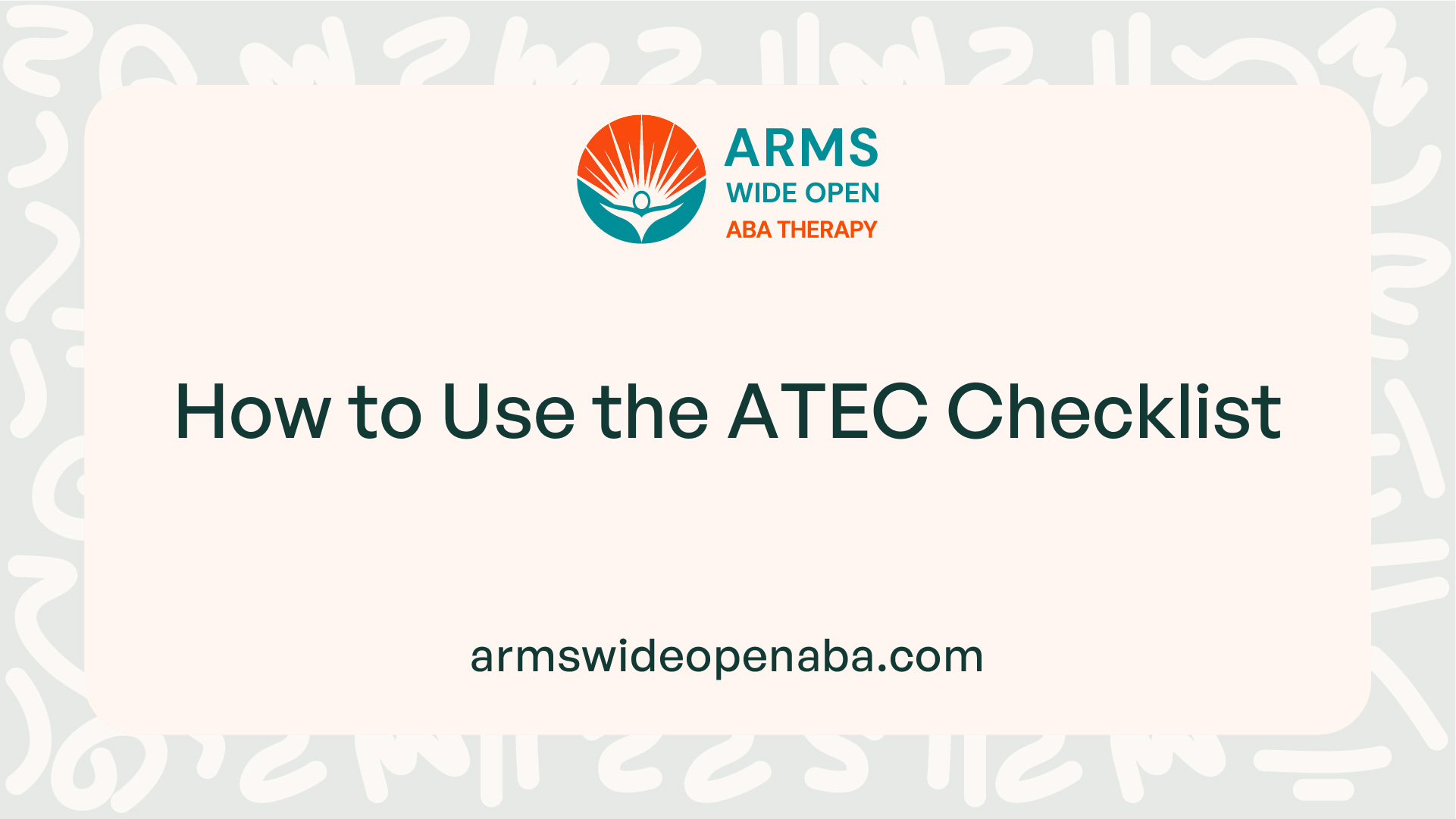
How to Use the ATEC Checklist
Mastering the utilization of the ATEC Autism Treatment Evaluation Checklist is essential to effectively assess individuals. The process involves two key aspects: administering the checklist and accurately scoring and interpreting the results.
Administering the ATEC Checklist
Administering the ATEC Checklist requires a systematic approach to ensure comprehensive evaluation. Follow these steps when administering the checklist:
- Gather Information: Collect relevant data and observations about the individual's behavior and communication skills.
- Set Up the Assessment Environment: Ensure a quiet and comfortable space to minimize distractions during the assessment.
- Observe and Record: Carefully observe the individual's behavior across the four key areas - communication, sociability, sensory/cognitive awareness, and health/physical behavior.
- Use Standardized Procedures: Follow the guidelines provided in the ATEC Checklist manual to maintain consistency and accuracy during the assessment.
Scoring and Interpreting Results
After completing the assessment, the next step is to accurately score and interpret the results of the ATEC Checklist. Here's how to effectively handle this crucial phase:

- Calculate Scores: Assign scores based on the individual's behavior within each domain, adhering to the specified scoring range.
- Total the Scores: Add up the scores from each section to obtain the total ATEC score.
- Interpret the Results: Higher scores may indicate more severe symptoms, while lower scores suggest milder symptoms. Interpret the results in conjunction with other assessments and observations to gain a comprehensive understanding of the individual's condition.
- Track Progress: Regularly administer the ATEC Checklist to monitor progress and evaluate the effectiveness of treatment interventions.
By mastering the process of administering the ATEC Checklist and accurately interpreting the results, healthcare professionals and caregivers can make informed decisions, tailor interventions, and track progress effectively for individuals with autism spectrum disorder.
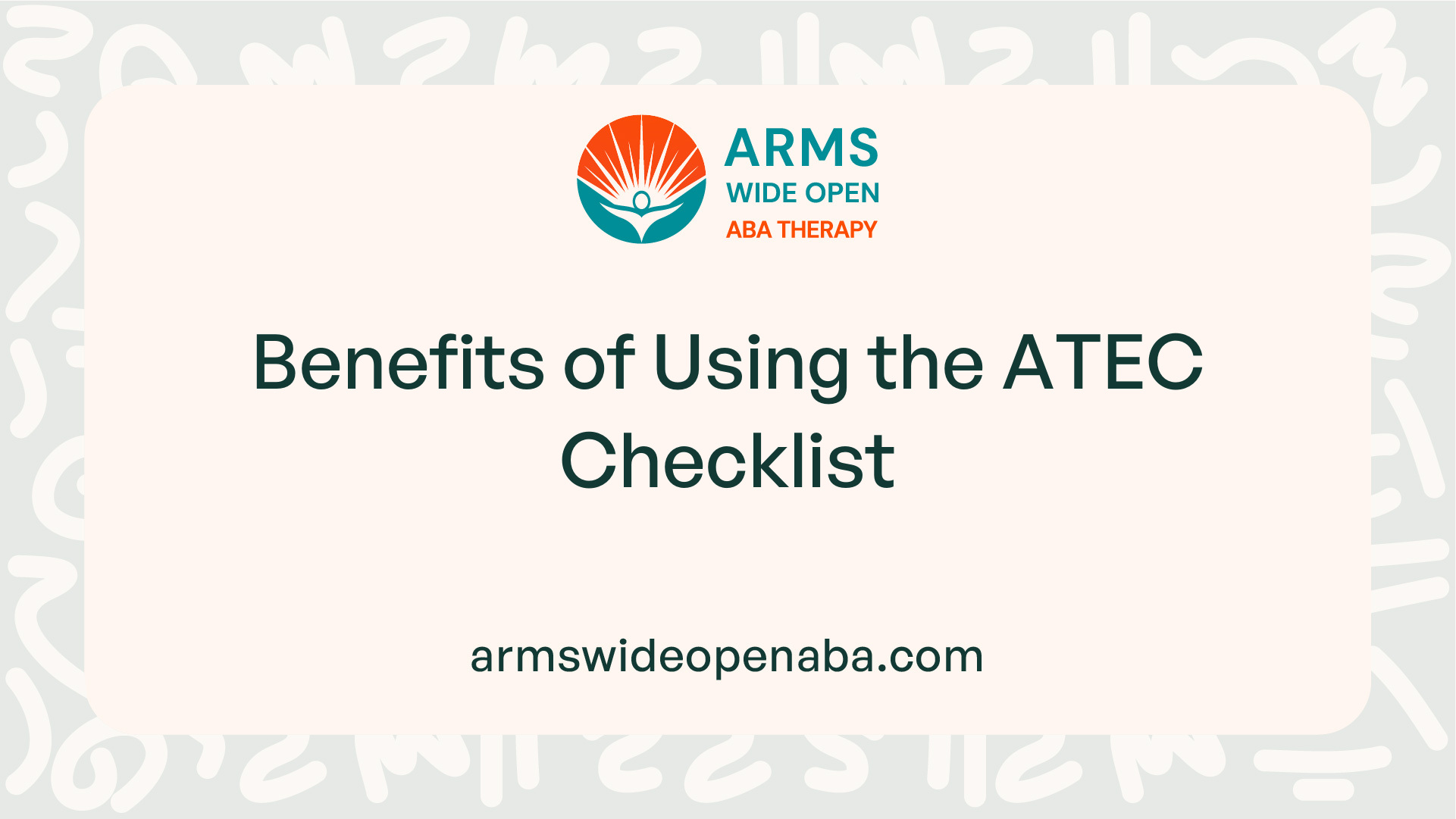
Benefits of Using the ATEC Checklist
Employing the ATEC Autism Treatment Evaluation Checklist offers a range of advantages to both individuals and professionals involved in autism treatment and assessment. These benefits include tracking progress, facilitating individualized treatment planning, and aiding in research and data collection efforts.
Tracking Progress
One of the primary benefits of utilizing the ATEC Checklist is its efficacy in tracking the progress of individuals with autism spectrum disorder (ASD) over time. By regularly administering the checklist, caregivers and healthcare providers can monitor changes in key areas such as communication, sociability, sensory/cognitive awareness, and health/physical behavior. This consistent tracking enables them to assess the effectiveness of interventions and adjust treatment plans accordingly.
Individualized Treatment Planning
The ATEC Checklist plays a pivotal role in facilitating individualized treatment planning for individuals with autism. By identifying the specific areas of strengths and challenges through the assessment results, professionals can tailor interventions and therapies to address the unique needs of each individual. This personalized approach enhances the effectiveness of treatment strategies and promotes better outcomes for individuals with ASD.
Research and Data Collection
In addition to its clinical applications, the ATEC Checklist serves as a valuable tool for research and data collection in the field of autism treatment and evaluation. The standardized nature of the checklist allows for the systematic collection of data across different populations, enabling researchers to analyze trends, outcomes, and the effectiveness of various interventions. The data gathered through the ATEC Checklist contributes to the body of knowledge surrounding ASD and informs future advancements in treatment approaches.
Utilizing the ATEC Checklist not only facilitates tracking progress and individualized treatment planning but also contributes to the accumulation of valuable data for research purposes. By harnessing the benefits of this comprehensive evaluation tool, caregivers, practitioners, and researchers can enhance their understanding of autism and improve the quality of care and support provided to individuals on the autism spectrum.

Considerations When Using the ATEC Checklist
When utilizing the ATEC Autism Treatment Evaluation Checklist, there are important considerations to keep in mind to ensure the effective assessment and monitoring of individuals with autism. Two key aspects to consider are the reliability and validity of the checklist and the integration of ATEC results with other assessments.
Reliability and Validity
The reliability and validity of the ATEC Checklist play a crucial role in its effectiveness as an evaluation tool for autism treatment.

When using the ATEC Checklist, it is essential to consider the reliability and validity of the results to make informed decisions regarding treatment planning and progress tracking. Ensuring the reliability and validity of the checklist enhances its utility as a valuable tool for evaluating individuals with autism.
Integrating ATEC Results with Other Assessments
In the evaluation and treatment of autism, it is often beneficial to integrate the results obtained from the ATEC Checklist with findings from other assessments and evaluations. By combining data from multiple sources, a more comprehensive picture of the individual's strengths, challenges, and progress can be obtained.
One approach to integration is to compare the results of the ATEC Checklist with those of standardized assessments, observational data, and input from caregivers and professionals. This holistic view enables practitioners to tailor treatment plans more effectively, address individual needs, and track progress accurately over time.
Integrating ATEC results with other assessments also facilitates collaboration among multidisciplinary teams involved in the care of individuals with autism. By sharing and synthesizing information from various evaluations, professionals can work together to develop cohesive and personalized treatment strategies that best support the individual's development and well-being.
By carefully considering the reliability and validity of the ATEC Checklist and integrating its results with other assessments, practitioners can enhance their ability to assess, monitor, and support individuals with autism effectively. The collaborative use of diverse assessment tools contributes to a comprehensive and individualized approach to autism treatment and care.
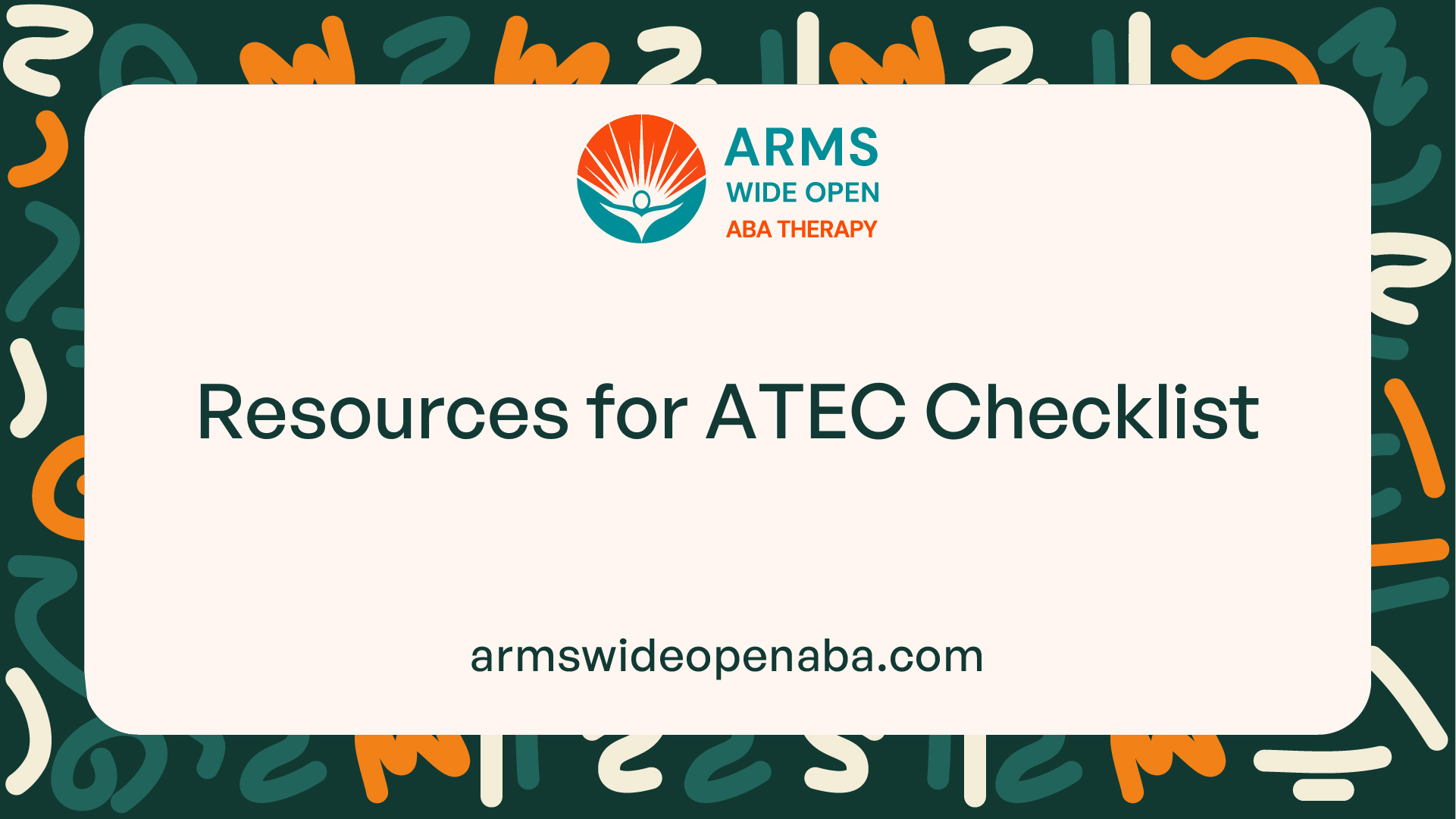
Resources for ATEC Checklist
For those interested in delving deeper into the ATEC Autism Treatment Evaluation Checklist, a wealth of additional information and support and training opportunities are available to aid in the understanding and utilization of this assessment tool.
Additional Information
Expanding knowledge on the ATEC Autism Treatment Evaluation Checklist can be facilitated through various sources. These include research studies, publications, and online resources that delve into the development, application, and effectiveness of the checklist in evaluating treatment outcomes for individuals with autism spectrum disorder.
In addition, organizations and institutions specializing in autism research and treatment often provide insights, guidelines, and updates on the ATEC Checklist. These resources can enhance understanding and utilization of the checklist in clinical, educational, and research settings.
Support and Training Opportunities
To further enhance proficiency in using the ATEC Autism Treatment Evaluation Checklist, individuals can benefit from support and training opportunities tailored to their specific needs. These training programs may cover various aspects, including administering the checklist, interpreting results, and integrating findings into treatment planning.
Support groups and workshops focused on autism spectrum disorder may also offer guidance and practical insights on effectively utilizing the ATEC Checklist. These avenues provide a platform for collaboration, learning from experienced professionals, and staying informed about advancements in autism treatment evaluation.
By exploring the additional information and seeking out support and training opportunities related to the ATEC Checklist, individuals can deepen their understanding and skills in utilizing this assessment tool to comprehensively evaluate and address the unique needs of individuals with autism spectrum disorder.
Sources
https://autism.org/autism-treatment-evaluation-checklist/
https://www.abtaba.com/blog/autism-treatment-evaluation-checklist
https://pmc.ncbi.nlm.nih.gov/articles/PMC5835994/
Similar articles
We’re here to help you

Our team is here to assist you in this process. Contact us for any assistance.
it’s easy to apply
We Accept Most Insurances
Our in-network insurance partnerships make ABA therapy more accessible to families throughout our service areas.







Our Insurance Process
We'll request your insurance details to help us verify your plan's coverage for ABA therapy. Once we've received this information, we'll walk you through your benefits, including copayments, deductibles and out-of-pocket maximums, so you know what to expect in advance.
Our team will then handle the preauthorization and all the necessary paperwork.
.svg)





















.jpeg)


































.jpeg)




.jpeg)







.jpeg)











.jpeg)
















